The e-Marketing & SEO Conference at CeBIT Australia 2008 is the first big event where I got a press pass to review it as an official blogger 🙂 Thanks to the organiser Barry Smyth for arranging that.
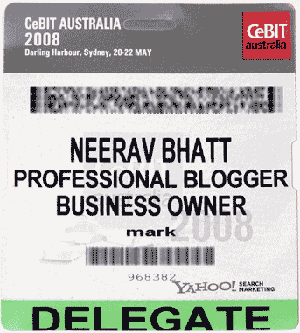
Ticket to e-Marketing & SEO Conference CeBIT Australia 2008
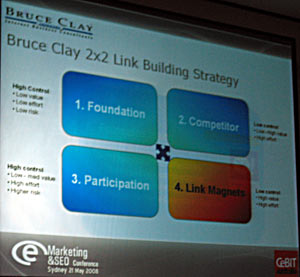
Jeremy Bolt – Principal – Bruce Clay Australia
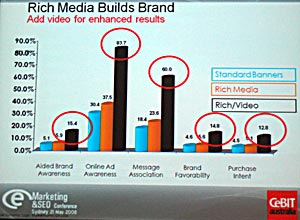
Mick Obrien – Operations Director Eyeblaster Australia
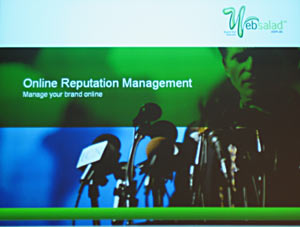
Jason West – Founder – Websalad
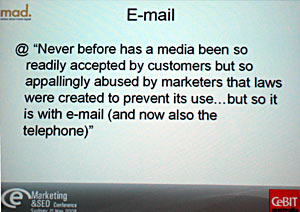
Malcolm Auld – Malcolm Auld Direct
![]()
Nick Holmes a Court – Head of Digital Strategy – Shifted Pixels
Anyway onto my review …
Usually Barry’s conferences are aimed at a specific audience eg: Search Engine Bootcamp (Beginners) and SMX Sydney (Advanced).
However because CEBIT attracts a broad range of attendees the conference sessions were a mixture of beginner, medium and advanced information. I liked this because it introduced some topics eg: online advertising, email marketing and podcasting which aren’t usually covered at SEO conferences.
Keynote – Gavin Appel – Hitwise
Each day, Hitwise provides insights on how 3 million Australian Internet users interact with more than 1 million websites, across 165+ industries.
This meant Gavin’s talk was full of interesting factoids and used case studies to effectively make his points. Make note of this other speakers, the audience wants case studies with real data, not made up guesstimates.
PS Hitwise uses data feeds from ISP’s so they can’t monitor user-agents yet eg: web browser versions, mobile phones etc
- Just over 50% of website visits by Australians (Aussies) are to overseas sites
- Google is #1 site visited by Aussies, Google websites in total = appx 10% of all aussie website visits.
- Google = 88% of searches in Australia (up 5% from last year)
- On average Aussie sites got 26% of traffic from search engines
- Searches with 4+ keywords increasing, searchers more sophisticated = Long tail SEO opportunities
- Misspellings drive traffic eg: “quantas” instead of “qantas”.
Tips from me: Buy domains eg: www.quantas.com so that misspellings are 301 redirected to your real site.
Try and grab traffic from misspellings eg: create a page listing funny ways your products/services have been misspelt and add misspellings to your PPC campaign
- Use mixture of branded (eg: SEEK, SEEK Learning) and generic keywords (eg: jobs, careers, resume) in page content and PPC campaign
- Use website analytics to segment new visitors and returning visitors
- See which sites are sending you traffic, thank them and perhaps partner with them
- Local search – growing, google maps dominates. Growing fast.
- Image search – make sure image filenames are optimised, use ALT tags properly, make make sure your /img/ directory is spiderable. Google image & Yahoo image search are #3 and #6 popularity in Aussie search engine use.
Amye Saunders – 24/7 Real Media aka Outrider
SEO Basics are important – yet many sites still don’t cover the basic requirements of kw research, quality content, search engine friendly site and link building. Without these other SEO work won’t achieve much.
- SEO = Higher search ranking and higher qualified traffic to site
- Clicks on SERPs: 60% Organic, 40% PPC
- Combine quality content useful to users with contextual in text linking.
- Keyword (KW) should be researched – don’t just use company jargon and guess work
- KW tools are USA centric and not very accurate – use them as a rough guide
- Tips from me: Mine your internal site search logs and inbound traffic referrers URL’s from site analytics for keywords that are driving traffic for you
- Online writing – people are skimmers and scanners – grab their attention above the fold, use H1-H6, lists and bold to break up the text
- Anchor text for links should be about that pages content, not “click here”. Tips from me: anchor text should make sense out of context eg: if all you saw was link text you’d know what the link target was.
- Beware of outsourced copy writers – get examples of their work to judge SEO writing skills, writing for web != writing for brochures
- Heading as image = bad. use H1-H6 with text headings and CSS image replacement
- Tips from me: Cloaking = bad even if by mistake like Flight Centre
- All flash site = Stupid = No search rank, pointless doing SEO on it. Use a HTML site with text for content instead
Neil Stickells – Steak Media
Search engine friendly sites are: Crawlable, Structured and use Keywords (KW) in the right places
- All Flash = Bad, Session IDs = Bad, Best content hidden behind registration/login screens = Bad
- Help Spiders – use text content, XML sitemaps, robots.txt, check broken links
- Make key content highly visible by linking to it.
- Use canonical URLs
- Use KW in strategic places: html title tag, META description, H1 etc
- Capitalise words in html title tag to improve CTR
- Use NOODP and NOYDIR
- Tips from me: Reinforce rank of key pages by linking in footer. I’ve seen this really increase rankings for some sites
- Content should be = useful to readers, fresh, distributed by full text RSS if article/blog post
- Hosting and choice of TLD can effect rankings – eg: .com site hosted in US won’t rank as well for Google Aus as equally good .com.au site hosted in Aus
- Tips from me: Get a reliable host with high uptime, redundant servers, ability to withstand bursts of high traffic and serve pages quickly. Cheap, slow, unreliable servers = You lose sales/ad $$$
Jeremy Bolt – Bruce Clay Australia
Jeremy talked about Link Building. He’s a good speaker: loud and clear, moves around the stage, uses bullet points, graphics and large text for his Power point presentation.
- Link quality is important – links from bad sites can damage your rank
- 1 good quality reutable link = Good vs 10 poor quality links = Bad
- Competitors – level of competition in your industry = how hard it is to rank. eg: Small independent supermarket site hard to compete with Woolworths site
- Remove site constraints – taking forever to change copy, forbidding people to link to your site etc, obsession with branding and marketing speak instead of content that your customers actually want….
- External Links to your Site
- Indicators of link importance and quality from a site – Link from old established domain=Good, quality content surrounding outbound links=Good, text links=Good, fewer outbound links on page=Good, site in same industry as you=Good, Link above fold=Good, Link from Yahoo Directory and DMOZ=Good, Links from your blog, social media and forum profiles=Good
- Image link=Mediocre, Lots of links on page=Bad, Same anchor text for all inbound links to your site=Bad, Unnaturally fast growth of links to your site=Bad
- Outbound Links from your Site
- Link to good quality sites and experts=Good, Link to sites in your industry aka Neighbourhood=Good.
- Internal Links to other pages on your Site: Link to pages you want to rank highly in navigation links etc
- Link Magnets: can really drive traffic to your site. See “will it blend” example
- Link Management: Keep track of links over time, see who refers traffic to you in analytics logs
Jeremy’s SEO Link 10 Commandments
- Thou shalt do whatever the search engine with market share wants
- Thou shalt not spam
- Thou shalt focus on link quality, not quantity
- Thou shalt not buy links
- Thou shalt not use page rank for evil
- Thou shalt create unique content others will link to
- Thou shalt not commit adultery, but if you have to, use a link condom (rel=”external nofollow”)
- Thou shalt use link text wisely
- Thou shalt use links to create focus
- Thou shalt manage and build links for SEO
Mick Obrien – Eyeblaster
Mick gave an entertaining overview of how to use new rich media formats to improve engagement by ad viewers within the ad itself rather than clicking through to another page, is the CTR dead as an ad measurement?
- Online has 12% share of Aussie ad spend, $1.34 billion in 2007, up 0.34 billion on 2006
- CTR for ads: 2005=0.5%, 2006=0.3%, 2007=below 0.2%. Anyway 6% of the online audience generate 50% of the clicks so the CTR is increasingly becoming irrelevant
- Solution: Innovate – provide more content in the ad unit eg: booking availability engine for a hotel ad. if the ad is relevant and well designed it increases engagement by viewers and builds brands without needing clickthroughs to a landing page
- These video examples Mick showed us of campaigns Eyeblaster has run for clients are really great examples of what can be done to engage ad viewers Mr Bean movie, Nivea lotion for men.
- Rich media campaigns could be really useful for otherwise boring government information campaigns, eg: see this great example : British Heart Foundation junk food campaign
- Be prepared to justify 0% CTR’s by providing detailed data on how many people interacted with different parts of a rich media campaign
Malcolm Auld – Malcolm Auld Direct
Another strong speaker, this was probably the best session with Mick and Malcolm one after the other. Malcolm engaged the audience, made them laugh and moved around. Didn’t just stand in one place.
- Why we use the internet: 1. Save time, 2. Waste time
- Design your site so you don’t block people from doing what they want quickly eg: remove flash intros even if they have skip button
- HTML emails and attachments are increasingly blocked by email programs due to abuse by marketers
- Engage professional copywriters – make sure they don’t write about you and your company, write from readers perspective – what can you do to make their life easier, better
- Many people have poor literacy skills. Analyse the copy for Flesch Reading Ease – aim for a value of 8-10.
- Send emails to a test account and check which words get flagged by spam filters eg: FREE, $$$, replace these words
- Black text on white background Sans serif fonts (verdana, arial etc) are easier to read on screen
- Don’t let graphics designers use small size 6/8 fonts. Lots of people young and old can’t read them easily
- Test different email formatting styles on a 10% section of your list. eg: 1/3rd get design A, 1/3rd get design B, 1/3rd get design C. Send the 90% rest of your list the design which converted best out of A, B and C
- Use a professional email distribution system so you can measure exactly how people interact with your emails and don’t get your own domain blacklisted by spam filters.
- Be aware of anti-spam laws for all the countries you’re sending emails to eg: ACMA guide to ensure you don’t spam
- Test which times of the day/week convert best. For many email lists Tues-Thurs is best, mid-morning beats first thing in the morning etc. But test on your list as your demographic may vary from this.
- Learn about people who signup for emails and customise communication to give them what they want eg: if they ask for weekly emails, TXT format, list of specials give them exactly that. Use a survey to get this data, offer a prize for random person who answers the survey.
- Once you establish a common ground with a person and communicate with them not at them they’ll be happy to read your emails and do business with you
Robert Beerworth – Wiliam
Robert gave an overview of Blogging for Business, I would have liked more case studies, statistics and examples.
- Blogs are just like any other website in the eyes of readers.
- Use a conversational writing style
- Corporate Blogs position you as an expert and can give you high search engine visibility.
- Treat your blog seriously – Its normal to have to invest time and effort for at least 6 months before you get any significant number of readers and comments
- Use a proper domain eg: www.companynameblog.com not companyname.blogger.com which looks cheap and unprofessional
- Measure success via: comments, sales/leads generated, RSS subscribers (use Feedburner).
- WordPress is the most popular free blogging platform.
Nick Holmes à Court – Shifted Pixels
Nick talked about how Podcasting can help you connect with potential customers and people who have influence and can recommend your products/services. Shifted Pixels gets 20% of new business from podcast referrals.
- Have real conversations in your podcasts with real people, be honest=Good
- Using podcasts for PR, sales spin and sounding boring and monotonous=Bad
- Audio podcasts: can record using skype calls and hotrecorder for voip or Gcast.com via a phonecall. Audio podcasts can be edited using the free Audacity software
- Video podcasts: can cost more but may get wider distribution.
- People have lower attention span and loyalty to watching all of a video podcast vs listening to all of audio podcast
- Amateur productions can use a cheap video camcorder, Professional production equipment and software costs $$$$
- Music Licensing – don’t use copyrighted popular music as it will get you in trouble. Plenty of free/low cost music available at garageband.com, mangatune.com, pumpaudio.com etc
- Distribution & Syndication: Podcasts can be distributed via : RSS feed from your WordPress blog, Youtube, Blip.tv, odeo.com, iTunes, Yahoo Podcasts etc
- Measuring success: Feedburner, Smarterstats, buzznumbers.com.au
Jason West – Web Salad
Jason talked about using SEO tactics for online reputation management
- Mentioned BusinessWeek article – What price reputation
- Internet is the starting point for companies reputation, you should “lead” and establish a positive reputation not just react knee-jerk style to crisis situations
- Monitor whats said about you: complaints, competitors, negative search results, counterfeit products etc
- Search engines = reputation engines. If your brand doesn’t rank for its own name reputation will be lowered
- Keep an eye on the top 20 results for key brands and your company name. Having as many of your own pages ranking well in the top 20 results is a good defensive strategy in case bad news breaks about your company because there are fewer SERPs spots for that bad news to be listed in.
- You can’t eliminate bad news, only manage impact visibility.
- Tips from me: Really great companies do all of the above as well as getting senior staff to genuinely engage with customers on chat forums, social media etc to apologise and fix their problems. For example the internet service provider Internode on the Whirlpool Broadband Forums
Related Articles
Definitive Guide to Maximise Benefits of Conference Attendance
5 Reasons Why Search Engine Optimisation is like Horse Racing
Day One and Day Two Recaps – SMX Sydney SEO SEM Conference 2008

Leave a Reply